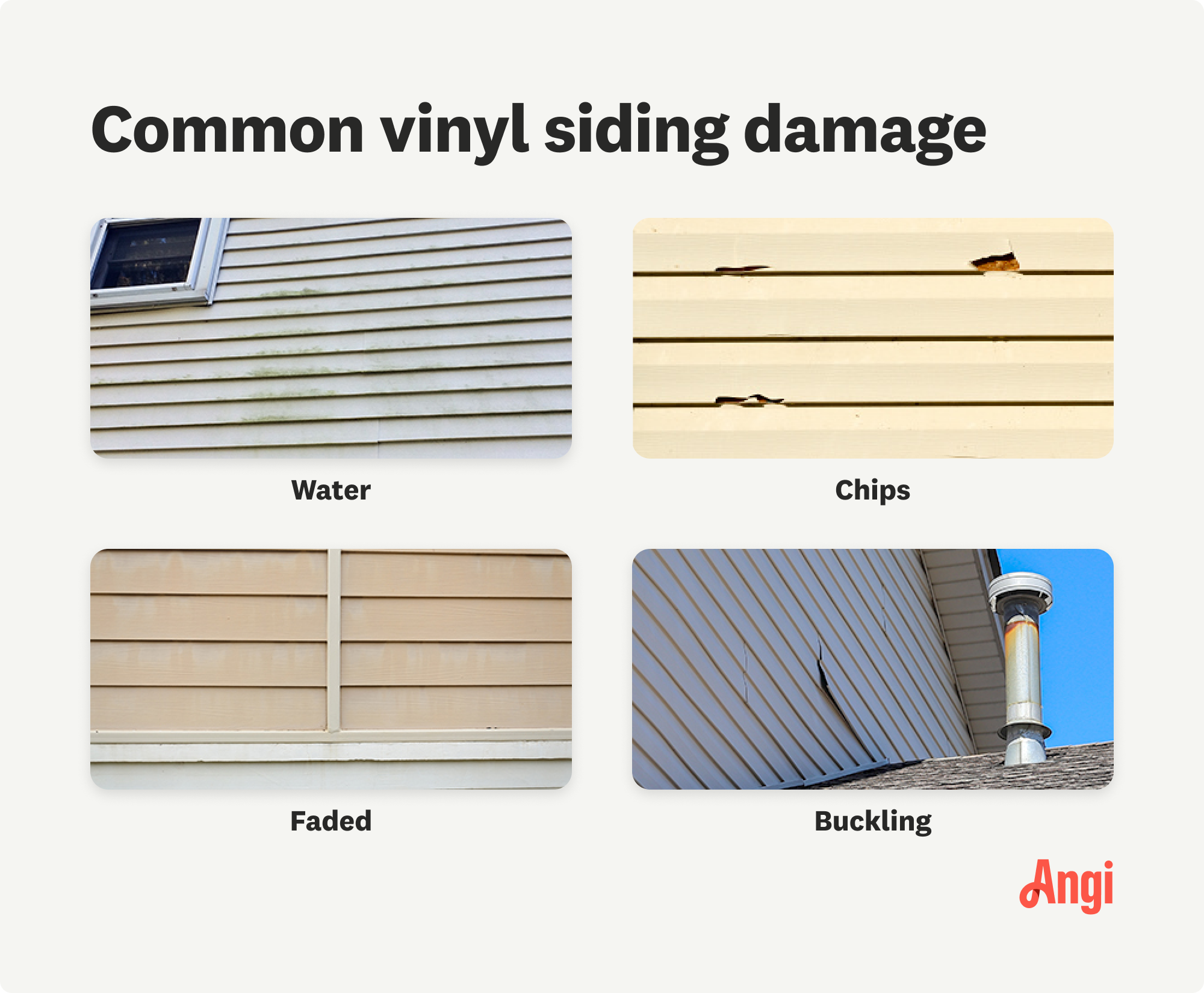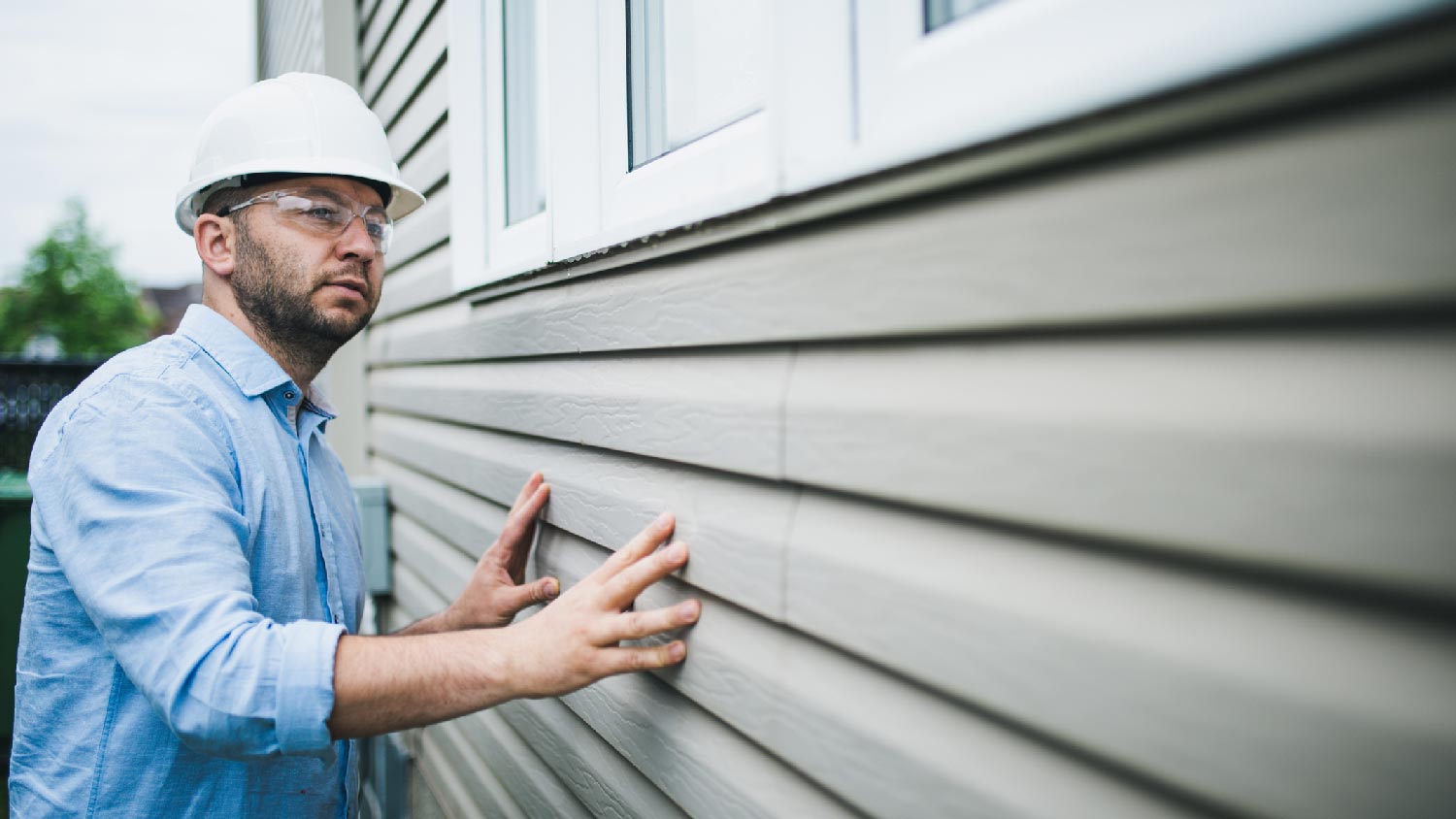Why Is My Vinyl Siding Wavy?
Giving it to you straight about why your vinyl siding is wavy


Wavy siding is the product of warping and buckling.
If nails are placed too tightly in the siding, this can lead to warping when panels expand and contract with the weather.
While rare, wavy siding can sometimes start all the way down at your home's foundation.
The color of your siding can impact your chances of getting warping.
Preventing wavy siding can be easy in some cases if you stay on top of the issue.
Why is my vinyl siding wavy? If you're noticing wavy-looking siding, you could be waving hello to a big problem at your home. While it may look like an optical illusion, wavy vinyl siding often occurs due to incorrect installation. A common issue is that the siding panels are too tightly attached to your home, not leaving enough room for it to expand in fluctuating temperatures.
Contact a pro to diagnose any potential damage to your home's siding, as they may be able to identify damage that is difficult to spot.
1. Improper Installation
Improper installation is the most common cause of wavy siding. The biggest culprit is siding that's been nailed into place too tightly. When this happens, vinyl can't move the way it's supposed to once temperature fluctuations cause it to go through a natural and common cycle of expanding and contracting. It's not always easy to determine if improper installation is the cause of wavy siding. However, one trick is to test the siding's "tightness" by giving one of the panels a wiggle. If the panel can't move about half an inch horizontally, it may be nailed down too tightly.
2. Incorrect Nailing
Nearly all types of vinyl siding feature oval-shaped nail slots. When siding is installed, it's essential that nails are inserted into these slots that are built into the design of the panels. If nails are erroneously placed too close to the ends, this won't leave enough room for proper expansion and contraction. Like improper installation caused by nailing panels too tightly, incorrect nail placement can also strain vinyl panels until they begin to buckle and warp.
3. Sunlight Absorption

Why is my vinyl siding wavy on a dark house? When choosing siding based on aesthetic preferences, many homeowners don't realize that darker vinyl siding is actually more susceptible to becoming wavy compared to lighter options. The reason why comes down to the simple fact that darker colors absorb more heat than lighter colors. In fact, it's not uncommon for homeowners to suddenly notice warping after painting light-colored vinyl siding a darker shade. If you notice that vinyl siding is melting, the likely cause is something called solar distortion that is caused by sunlight being magnified as it's reflected off of energy-efficient windows.
4. Your Foundation Shifted

Wavy siding could actually be an indicator of a much larger problem at your home. If your foundation has shifted significantly, the settling process could have caused enough structural changes to actually warp your siding. If you can't find another reason why your vinyl siding is wavy, a foundation inspection to check for this rare cause might be a good idea.
5. Your Siding Isn't the Best Quality
Your siding may be wavy simply because low-quality siding was used on your home. In some cases, vinyl siding actually has waves before it is even installed. Unfortunately, barely noticeable imperfections that are either overlooked or ignored during installation can grow worse as sun exposure and temperature fluctuations put a strain on vinyl.
How to Prevent Wavy Vinyl Siding
The best way you can prevent wavy, warped vinyl siding is to choose high-quality siding that is installed by trained and licensed professionals. If possible, utilize landscaping and other sun-reduction methods to reduce direct sunlight over your siding by as much as possible. While it can't necessarily prevent waving, cleaning vinyl siding regularly is a good way to keep an eye on the health of your siding.
Finally, you might want to consider skipping vinyl siding altogether if you live in an area where heat and sunlight are major factors. Fiber cement is an alternative to vinyl that is resistant to warping. Additionally, it's worth looking into wood vs vinyl siding and aluminum vs vinyl siding to see if these more expensive options could actually be better investments. Wood and aluminum can last up to 40 years when maintained properly. If you're committed to vinyl due to its modern look, low price, and easy maintenance, consider budgeting for insulated vinyl siding cost to get a product that is more resistant to fading, warping, weather damage, and other forms of damage.
What to Do If You Notice That Your Vinyl Siding Is Wavy
Unfortunately, there's no way to straighten out wavy siding once it has become warped. However, it's possible that paying for vinyl repair cost could be enough to get the issue under control if you're only noticing warping on a few panels. Even if you're not sure if your siding can be saved, it's still important to take action quickly with help from a local vinyl siding repair company before the situation gets worse.
Once siding is compromised in any way, this leaves your home vulnerable. Sagging, melting, and changes to the configuration of your siding can all leave gaps that expose your home's structural materials to rainwater, snow, and moisture. This exposure can quickly lead to mold, rot, and insect issues that can all be very costly to fix.
By having your siding inspected before you notice warping issues, you may be able to prevent issues from ever happening. This is why it's recommended for homeowners to have routine siding inspections. In addition to a routine visual inspection, you should check to see if your panels are potentially nailed in too tightly. If you notice that panels are nailed incorrectly before they begin warping, you can simply loosen the nails to prevent issues!





- Learn the Pros and Cons of Vinyl Siding
- Wood Siding vs. Vinyl Siding: Pros, Cons, and Costs
- Aluminum vs. Vinyl Siding: A Comparison Guide
- Vinyl Siding Melting: Common Causes and Solutions
- Fiber Cement Siding vs. Vinyl Siding: What's The Better Choice?
- The Pros and Cons of Different House Siding
- How to Restore Faded Vinyl Siding
- 12 Types of Vinyl Siding to Give Your Home a Fresh Look
- Can You Put Siding Over Brick? And Should You?
- Insulated Vinyl Siding Pros and Cons: Everything You Need to Know











